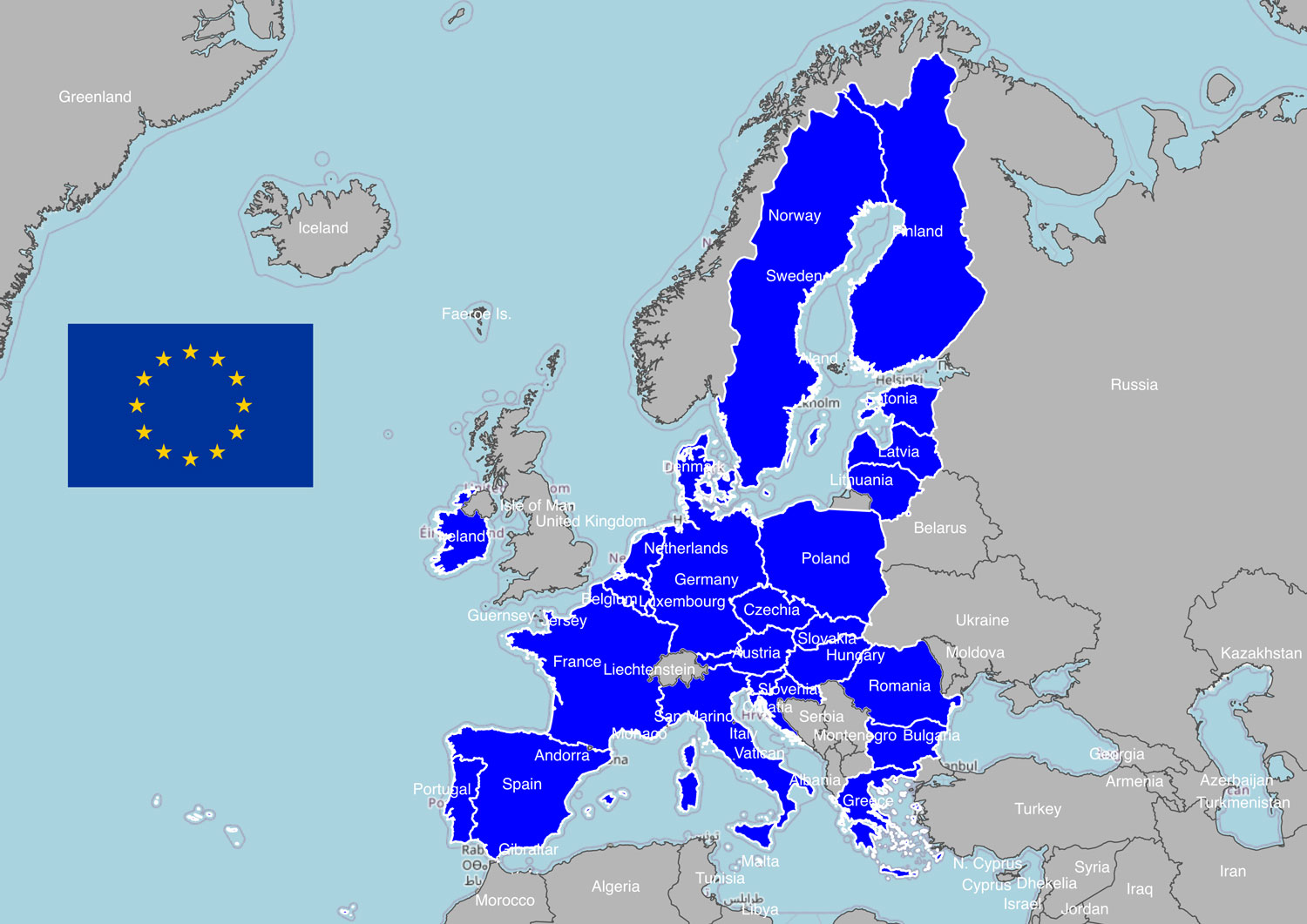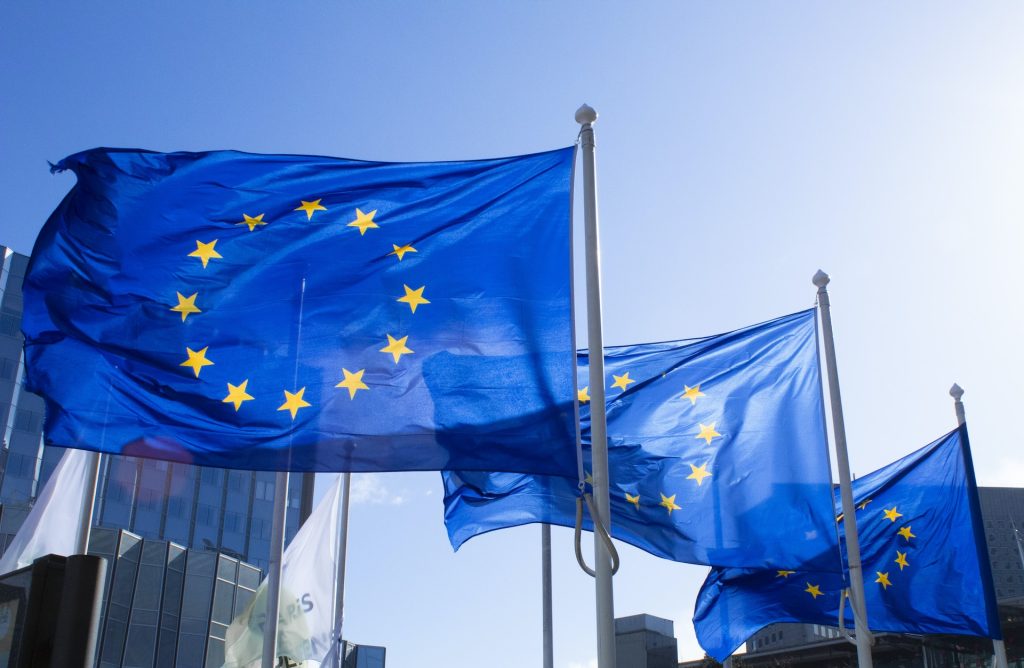
Today, we launched a series of essays to explore regional institutions where countries and geopolitical entities collaborate to forge intergovernmental relationships that generate mutual benefits and foster domestic and regional prosperity. Consequently, security and peaceful applications for neighboring nations and the pursuit of coalition building are prioritized, enabling states to participate in such collaborative endeavors actively.
This series of essays is designated for regional institutions to provoke analyzing institutions due to a Geographic Approach. “The geographic approach is a way of thinking and problem-solving that integrates and organizes all relevant information in the crucial context of location” (ESRI, 2023). In a brief overview, readers will gain familiarity with the principles of governance, geographic approach, and the pursuit of prosperity within regional institutions. To kick-start this journey, the European Union has been selected as the first regional institution to introduce to the esteemed readers of PA Geography.
Governance and collaboration
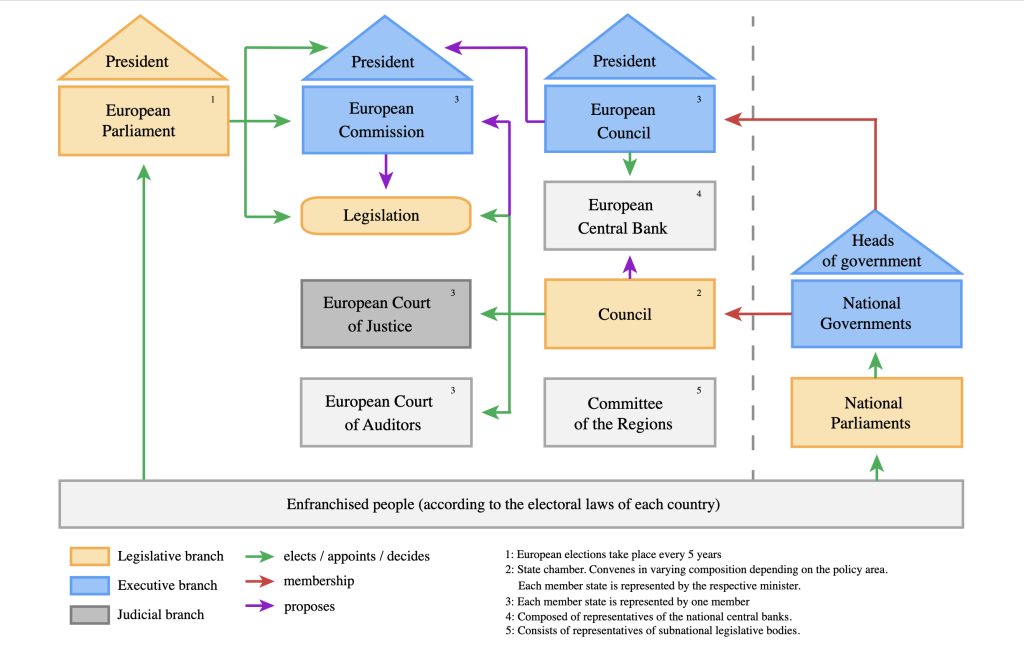
In a collaborative governance approach, the European Union (EU) has embraced differentiated integration to tailor arrangements for countries and geopolitical entities to promote prosperity and cooperation. The structure of the EU revolves around seven major institutional bodies, as outlined in Article 13 of the EU’s foundational agreements, which play key roles in the decision-making process. These institutions include:
- The European Parliament: Representing EU citizens, the Parliament exercises legislative power and democratic oversight over other EU institutions.
- The European Council: Comprising the heads of state or government of EU member states, the Council sets the EU’s general political direction and priorities.
- The Council: Consisting of ministers from each member state, the Council participates in legislative decision-making alongside the European Parliament.
- The European Commission: Commonly referred to as “the Commission,” it acts as the EU’s executive branch, proposing legislation and implementing decisions.
- The Court of Justice of the European Union: This judicial body interprets EU law and ensures its uniform application across member states.
- The European Central Bank: Responsible for monetary policy and managing the Euro currency, the ECB plays a vital role in the economic stability of the Eurozone.
- The Court of Auditors: This institution conducts financial audits to ensure EU funds are appropriately managed and used efficiently.
The collaborative efforts of these institutional bodies contribute to the functioning and decision-making processes within the EU, facilitating regional integration and progress toward common goals (European Union Treaty, 2008).
Regarding the institutional arrangements in the organizational chart arena, the EU structure contains three branches: Legislative, Executive, and Judicial. Regional and intergovernmental branches are linked to the national or individual county governments. At the same time, European Council was reconstructed by national government representatives and heads of government. European Parliament is the highest regional and intergovernmental entity for legislation affairs which is reshaped according to the electoral laws for each country. In summary, the Council of the European Union represents governments, the Parliament represents citizens, and the Commission represents the European interest. This three-segregated structure allows for effective governance, regional cooperation, and representation of various stakeholders’ interests within the EU.
Geographic Location
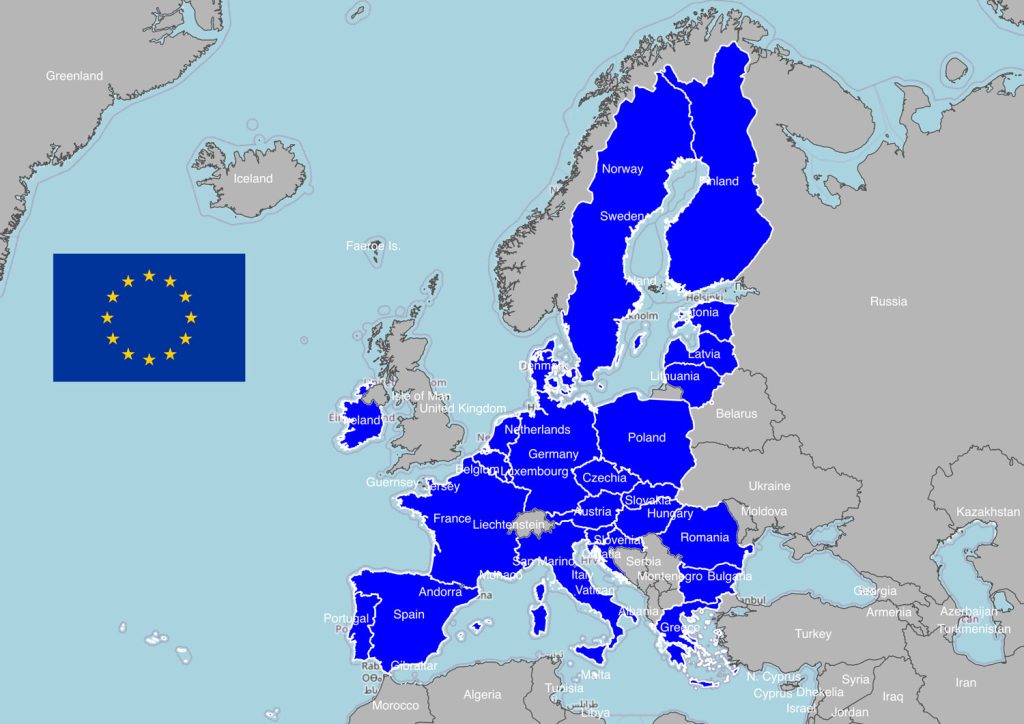
In a geographic approach, the European Union (EU) is a regional institution comprising 27 member states. It aims to achieve “European Integration,” a term used in political discourse to describe the process of economic, legal, social, and cultural coordination among neighboring European countries. This economic and political alignment pursuit has contributed to establishing a closely integrated regional entity.
One of the pivotal developments in this integration was the “Schengen Agreement,” formed in 1985 and expanded in 1990. The agreement’s objective was gradually eliminating internal border controls among EU member states. While most countries embraced this vision, Ireland and the United Kingdom chose not to participate fully, and the UK eventually withdrew from the EU membership in 2020 following the Brexit referendum.
As of the end of 2022, Albania, Bosnia and Herzegovina, Montenegro, North Macedonia, and Serbia have all been officially granted candidate status, indicating their desire to join the EU. Negotiations with these countries continue, contingent upon their fulfillment of the “Copenhagen criteria,” ratified in 1993, which serves as a set of requirements to be met before accession. Additionally, Turkey and Ukraine have expressed their aspirations to become EU members. The European Union’s regional integration has fostered cooperation and collaboration among its members, shaping a unified entity committed to shared values and objectives.
Prosperity and benefits
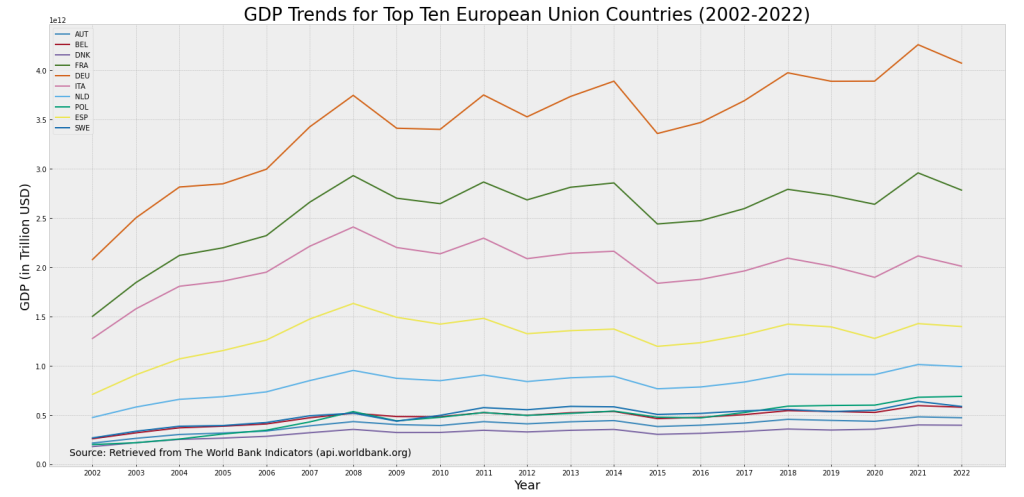
The European Union (EU) holds significant benefits for its member states and citizens, with some notable implications. Some implications can be included but not limited to,
- Economic and Trading Advantages: The EU creates a single market, facilitating the free movement of goods, services, capital, and people. This integration fosters member states’ economic growth, trade opportunities, and prosperity.
- Peace, Security, and Common Foreign Policy: One of the EU’s primary objectives is to ensure peace and stability in Europe. By promoting economic interdependence and political cooperation, the EU plays a vital role in maintaining peace and enhancing security through a united and coordinated foreign policy and managing the EU foreign affairs assigned to a person who serves as High Representative for Foreign Affairs and Security Policy.
- Standard of Living, Healthcare, and Education Services: EU member states prioritize social cohesion, providing funding for the improvement of citizens’ standard of living and access to quality healthcare and educational services.
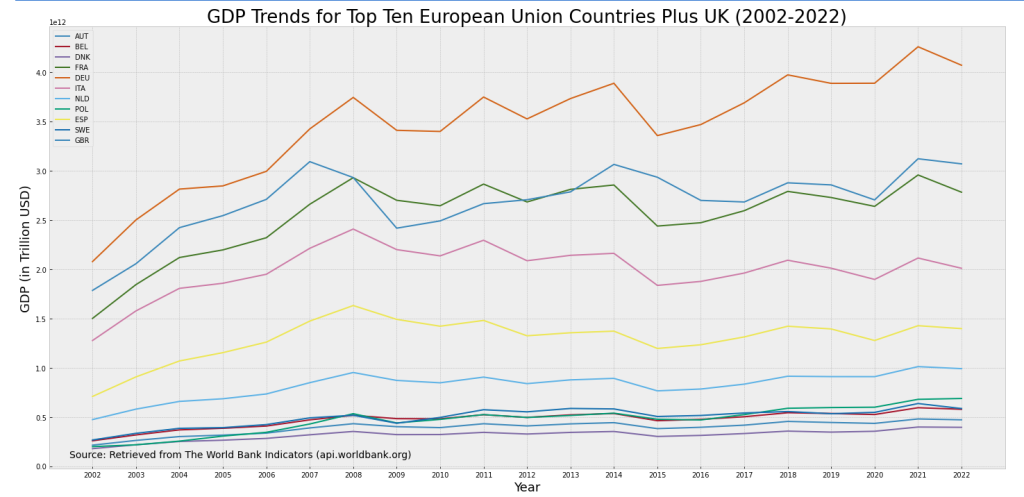
In 1999, the EU introduced the Euro as the official and regional currency, and it is now used in 20 member states, promoting monetary integration and simplifying cross-border transactions. The European debt crisis in 2009 impacted several member states, including Greece, Ireland, Portugal, Spain, and Cyprus, leading them to undertake public budgetary reforms and seek financial bailout packages from the International Monetary Fund (IMF). As of 2022, the nominal value of total GDP for the entire EU region amounted to $17.1 trillion, with a GDP per capita of $37,180. Over the past 20 years (2002-2022), the approximate GDP growth rate ranged between 1.5% to 1.7%. The following line graph illustrates the GDP trends for the top ten EU member states over the last 20 years, providing insights into their economic performances and developments.


